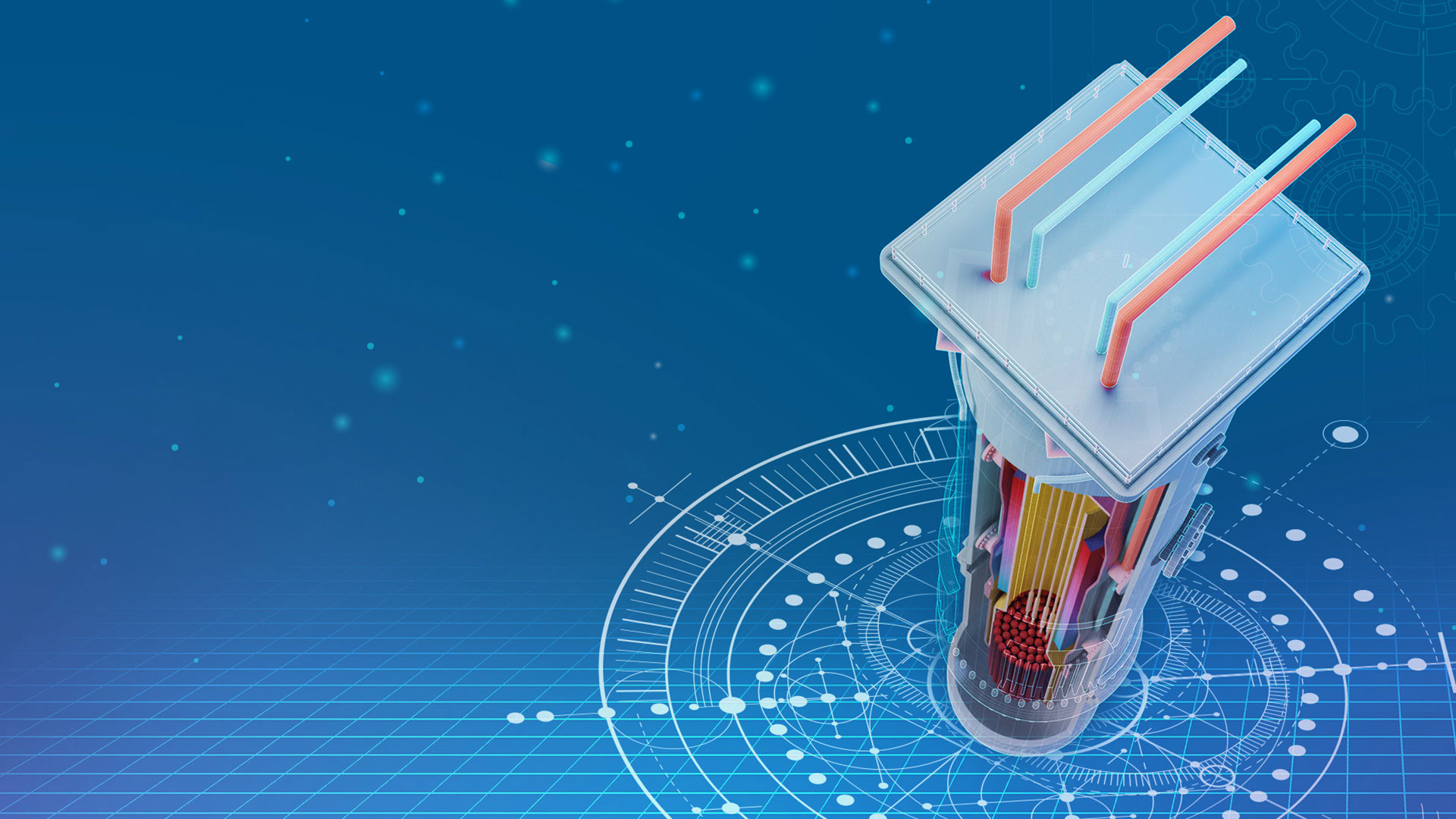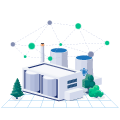Design Safer and Smarter Advanced Nuclear Reactors
Optimize the design of small modular reactors with the virtual twin experience.
Achieve Climate Targets With Nuclear
As a clean and dispatchable electricity source, nuclear energy complements intermittent renewables such as wind and solar to ensure that total power supply reliably meets grid demand. Given its crucial role in the clean energy transition, nuclear power must scale up quickly to accomplish decarbonization goals1:
10%
of the world’s electricity is currently supplied by nuclear power
66Gt
of carbon emissions have been avoided worldwide through nuclear energy since 1971
10GW
The yearly increase in global nuclear capacity needed to realize net-zero goals by 2030
Today, advancements in nuclear technology present exciting opportunities. New builds are making headways in nuclear fusion, while advanced and small modular reactors (SMRs) are projected to enter the market within the next decade. The key question is: How quickly can industry leaders ensure the safety and success of advanced reactor technologies to secure a competitive advantage? Virtual twin technology on the 3DEXPERIENCE® platform can accelerate the design process — by digitalizing the nuclear safety case and reducing costly disruptions throughout the project lifecycle.
The Nuclear Power Plan
Discover how the virtual twin establishes safe, replicable and cost-effective SMR designs to expedite the development of next-generation reactors.
What Are the Benefits of Advanced Nuclear Reactors?
Compared to traditional nuclear infrastructure, advanced nuclear reactors such as SMRs are safer due to passive safety measures that don’t depend on human intervention or backup power supplies to work. Their simpler design and volume fabrication enable lower project costs, shorter construction times and more efficient decommissioning. SMRs can also be installed at sites where conventional reactors cannot, helping to localize electricity production and decarbonize industrial heat for hard-to-abate sectors such as steel manufacturing.
SMRs are essential in the future low-carbon energy mix, but first, they must be ready and deployable at scale. Through simulation and model-based systems engineering within the virtual twin, designers and engineers can iteratively refine the SMR design while adhering to stringent nuclear safety requirements. They can explore configurations and scenarios virtually to identify the most efficient designs without building costly prototypes. The virtual twin allows for continuous improvement and optimization throughout the design phase so vendors can develop safe, reliable, configurable and affordable reactors.
We see a huge momentum for nuclear energy. As an industry, we must do our best to reduce the development cycle of advanced nuclear technologies and accelerate the time to market of new energy solutions.
Spearhead Next-generation Innovation
Currently, all proposed SMR designs will use nuclear fission to generate power, but visionary leaders are leveraging the 3DEXPERIENCE platform to explore the possibilities of nuclear fusion. The idea is to harness the power of the sun and develop energy infrastructure capable of delivering electricity to the grid. Since new nuclear energy applications rely on innovative designs and alternative fuel types, vendors can leverage the virtual twin to conduct risk-informed design evaluations and strengthen their safety case.
From fission to fusion, the opportunities for advanced nuclear reactors are limitless. The 3DEXPERIENCE platform empowers vendors to tap into the full potential of SMRs so they can rapidly scale up the nuclear industry. By advancing nuclear reactor technologies and embracing virtual twin capabilities, vendors can actively contribute to the progression of the global transition to clean, reliable and sustainable energy sources.
Discover the Customers Leveraging Dassault Systèmes Solutions
Explore Our Solutions
The Power Plan for a Smooth Energy Transition
Ready to accelerate the shift to clean energy for a brighter tomorrow?
1Source: “Meeting Climate Change Targets: The Role of Nuclear Energy” by Nuclear Energy Agency (May 2022)




